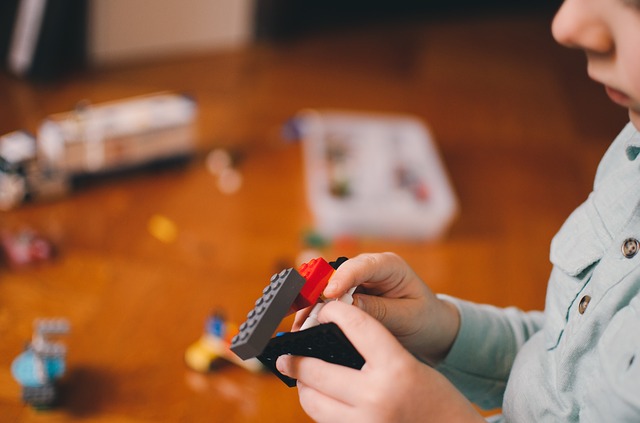
This is the first in a new series of Mental Elf blogs produced in partnership with the Journal of Child Psychology and Psychiatry. Each month we will select a new paper from the JCPP and write a blog to help reach a wider audience. We’re really excited about this new venture and look forward to highlighting important new evidence that has implications for practice. And now, over to James Cusack for the first blog!
Do autistic children have difficulties with emotion regulation? Could CBT (cognitive behavioural therapy) help support them with this issue? Let’s consider findings from a recent randomised controlled trial that aimed to answer these questions.
Autism is a developmental disability characterised by difficulties with interacting and understanding the world around you. The core clinical signs of autism include atypical social communication and rigid behaviour. One percent of the UK population have autism spectrum disorder, that’s 700,000 people.
The core symptoms of autism affect autistic people and their families, but mental health problems often play a bigger role in impacting a person’s day-to-day life. According to a research prioritisation exercise undertaken by Autistica and partners, the number one priority for autism research is mental health. Stakeholders also felt that anxiety had such a significant impact on day-to-day living that it should be a distinct priority (ranking fourth).
These findings are not surprising given that seven out ten primary school-aged autistic children have a mental health problem, with five out of ten having an anxiety disorder. These figures demonstrate the challenges that many autistic children face in their day-to-day lives. Sadly, the problems often continue into adulthood where chronic difficulties with mental health persist, which can lead to a higher risk of suicide and suicidality.
In spite of relatively low historic spend on mental health in autism, recently there has been a rapid increase in funding for this area, particularly in Canada and the United Kingdom. Many also feel that focusing interventions to treat mental health problems are more feasible and more likely to improve health and quality of life.
We know that mental health difficulties such as anxiety are likely to occur in autistic people as they mature. The mechanisms responsible for social behaviour and communication are connected to the mechanisms responsible for anxiety. We also know that tolerating uncertain situations, understanding of own emotions and differences in sensory processing are likely to play a role the anxiety experience by people with autism.
The authors point out that difficulties with emotion regulation may be common in autism. To describe emotion regulation they refer to a definition by Thompson 1994:
the extrinsic and intrinsic processes responsible for monitoring, evaluating, and modifying emotional reactions, especially their intensive and temporal features, to accomplish one’s goals.
The authors of this study aimed to understand whether cognitive behavioural therapy (CBT) can improve emotion regulation in autistic children. CBT has been trialled in autistic children for the management of anxiety and results suggest that it can be effective for some. CBT is often adapted for autistic children. In this trial, the authors proposed a transdiagnostic approach (where changes are not made to tailor the intervention towards autistic children).

Mental health problems are key research priorities for people living with autism. This is not surprising given that 70% of primary school-aged autistic children have a mental health problem.
Methods
This is a waitlist randomised controlled trial, which means that half of those in the study were asked to wait to receive the intervention, while the treatment group received the intervention immediately.
Participants
The trial included 68 autistic children aged 8-12 years old with intelligence in the normal range. Diagnosis was confirmed using a validated diagnostic instrument and a questionnaire measure. 88% of children participating had emotional problems. 35 children were assigned to the treatment group, and 33 children were assigned to the waitlist group.
Intervention
CBT aims to help people by helping them to understand the way they think and behave. There are various types of CBT, some of which have been adapted specifically for autistic children or adults. The intervention was named “Secret Agent Society: Operation Regulation” (SAS-OR). SAS-OR is “transdiagnostic” (not being implemented for any specific diagnosis and is part of a wider programme to improve social skills). SAS-OR is manualised and involves ten sessions which take place between parent and child with a trained therapist present. The intervention uses spy-themed games to work on emotion education and control of emotional responses using relaxation techniques.
Outcome measures
Child, adult and clinician rated measure of emotion regulation. Outcomes were measured three times: at baseline, post-intervention or post-waitlist, and at the 10 week follow-up.
Results
No improvements were present in child-repoorted measures of emotion regulation or emotion regulation knowledge (Children’s Emotion Management Scales; Dylan is Being Teased; James and the Maths Test).
Across parent measures (Emotion Regulation and Social Skills Questionnaire; Emotion Regulation Checklist) and clinician measures (Anxiety Disorders Interview Schedule-Parent; Clinical Global Impression Scale)) there was an improvement according to most measures of emotion regulation. These improvements were present post-intervention and at the 10 week follow-up.
An improvement was not found in the parent-rated BASC-2 (Behavior Assessment System for Children). An improvement was found on two of four sub-scales: Adaptive behaviour and Behavioural Symptoms Index.

This trial found that CBT brought significant improvements on measures of emotion regulation and aspects of psychopathology for some young people with autism.
Conclusions
The results suggest that CBT may help to improve emotion regulation in autistic children. While these results are promising, they are not conclusive for several reasons. It is not clear:
- Whether any improvement is real, or just an example of parent or clinician bias. The probability of this being the case is increased when we note that there were no statistical differences in child-reported measures (although the authors note that this is common, and perhaps an issue with the measures available) or more objective measures of performance.
- If the benefits are real, who benefits? How many children saw a clinically significant benefit?
Further research could help to understand these points in greater detail. A more appropriate control condition (an alternative therapy instead of waitlist) might mitigate against any placebo effect. It is worth noting that placebo effects are a rife in autism clinical trials (particularly when using parent or clinician measures; see Lord et al (2017) for a particularly startling example). Also, the development of truly objective measures may help remove self-report bias.
Qualitative research could also help to understand the experiences of young people and adults during the intervention. Understanding child experience is particularly key given the lack of child-reported improvement.
While these factors are important, the authors should be congratulated on following a relatively rigorous methodology. The results are promising and propose a new approach that may well genuinely help autistic children.

If these benefits of CBT are real, who benefits? Parents, clinicians or young people with autism?
Strengths and limitations
Strengths
- This is a relatively robust study which follow a standardised methodology
- The sample is well-described with a tight age-range
- Much of the protocol has been registered (see below for the exceptions)
- The study focusses on a clear community priority and area where research is needed
- The mechanism they are targeting is relatively well-understood
- Focus on transdiagnostic approaches is much-debated in autism, so focus on this area is welcome, particularly given the increased potential for implementation.
Limitations
- Lack of blinding and control condition (waitlist instead of a comparison treatment)
- Were there any adverse events? Were there any concerns reported by child or parent?
- Some of the primary and secondary measures reported in the original trial registration are not included in the paper. These include:
- Emotion Regulation Questionnaire – Child
- Parenting competence and psychopathology
- Direct testing of childrens cognitive flexibility (Emotional Stroop Task: Smith & Waterman, 2003; and CogState-Set Shifting Task)
- Physiological arousal (electrodermal response)
- Social-emotional awareness (CogState-Social Emotional Task)
- Additionally, some measures are not included in the original registration, but are discussed in the paper and used as evidence of significant improvement:
- Anxiety Disorders Interview Schedule – Parent
- Clinical Global Impression Scale

Changing outcome measures is a red flag in any RCT. See the CONSORT website for more details.
Implications for practice
- This study adds to the literature which suggests that CBT is effective for some autistic children
- It is certainly clear from the wider literature that CBT does not benefit all children, and many report finding the experience of CBT a negative one (which is why it’s key for future research to consider harm/adverse events/time wasted)
- Using this type of CBT intervention to target emotion regulation seems like a sensible approach, with the caveat that evidence of efficacy is not yet entirely conclusive.

CBT clearly doesn’t benefit everyone and may cause harm to some, so it’s vital that future research in this field measures and reports on adverse events.
Conflicts of interest
No direct conflicts. James Cusack is Director of Science at Autistica – the UK’s autism research charity. Autistica has a long-standing strategic focus on mental health and autism.
Links
Primary paper
Weiss JA, Thomson K, Burnham Riosa P, Albaum C, Chan V, Maughan A, Tablon P, Black K. (2018) A randomized waitlist-controlled trial of cognitive behavior therapy to improve emotion regulation in children with autism. J Child Psychol Psychiatry. 2018 Apr 23. doi: 10.1111/jcpp.12915. [Epub ahead of print]
Other references
Jones RM, Carberry C, Hamo A, Lord C. (2017) Placebo-like response in absence of treatment in children with Autism. Autism Res. 2017 Sep;10(9):1567-1572. doi: 10.1002/aur.1798. Epub 2017 Apr 12. [PubMed abstract]
Simonoff, E., Pickles, A., Charman, T., Chandler, S., Loucas, T., & Baird, G. (2008). Psychiatric disorders in children with autism spectrum disorders: Prevalence, comorbidity, and associated factors in a population-derived sample. Journal of the American Academy of Child and Adolescent Psychiatry, 47, 921-929. [PubMed abstract]
Weston, L., Hodgekins, J., & Langdon, P.E. (2016). Effectiveness of cognitive behavioural therapy with people who have autistic spectrum disorders: A systematic review and meta-analysis. Clinical Psychology Review, 49, 41-54.
Photo credits
- Photo by Hermes Rivera on Unsplash
- Photo by Anna Samoylova on Unsplash
- Kevin Jarrett CC BY 2.0
- Photo by Les Anderson on Unsplash

[…] CBT may help to improve emotion regulation in children with autism […]